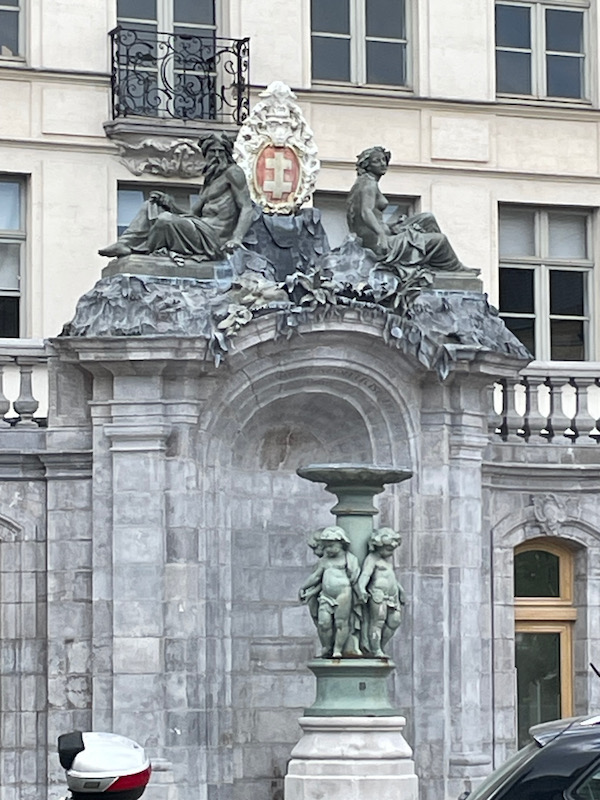Our Blog - Summer 2024 Trip - Saint-Omer, France
With a population of 14,661, it is the 11th largest city in the Pas-de-Calais department and is part of the Caps et Marais d'Opale regional natural park. The city has a rich past and its heritage and proximity to England, Belgium, and the Netherlands, contribute to local tourism. There is quite a bit of history here .... it is actually thought that Julius Caesar built Portus Itius here and departed from here in 55 BC to invade England. Around 600, a monk (Saint Omer) was sent to evangelize the area. He arrived and built a small church, which which would eventually become the Notre-Dame cathedral of Saint-Omer. The Abbey of Saint-Bertin was also built here, where Childric III, last king of the Merovingian dynasty, is imprisoned and eventually died in 755. During the 12th and 13th centuries, the textile industry flourished here like many cities in the North of France.
There have been various fortifications, which are no longer visible. Around 1200, the 4th set of fortifications appeared, including 70 towers, 4 gates, and 4 water gates. By 1300, the city population had grown to around 40K but about a third of the population died during the Black Plague, which arrived her around 1346-1349. The walls were redone by Vauban in 1678 but most were destroyed in 1830's to make way for large streets and boulevards around the city.
The construction of the Cathedral Notre-Dame took place from the 13th century to the 16th century. The architecture combines elements of primitive Gothic, radiant, and flamboyant styles. A modest church was built here around 820 which was destroyed by a fire in 1033. A stone church in Romanesque style was built in 1052 but it was damaged in 1191 by a fire. The choir, ambulatory, and the radiating chapels were rebuilt and the transept was added in 1263. The nave was reconstructed in the 1370's and then side chapels were added between 1386 and 1403. The nave was vaulted in 1506. Not the easiest church to get a good picture of, but here you can see down the nave and the transept that juts out (just after the van). Then looking from the corner of the start of the nave, you can see the large, square tower. Then lastly, back around to the other side.
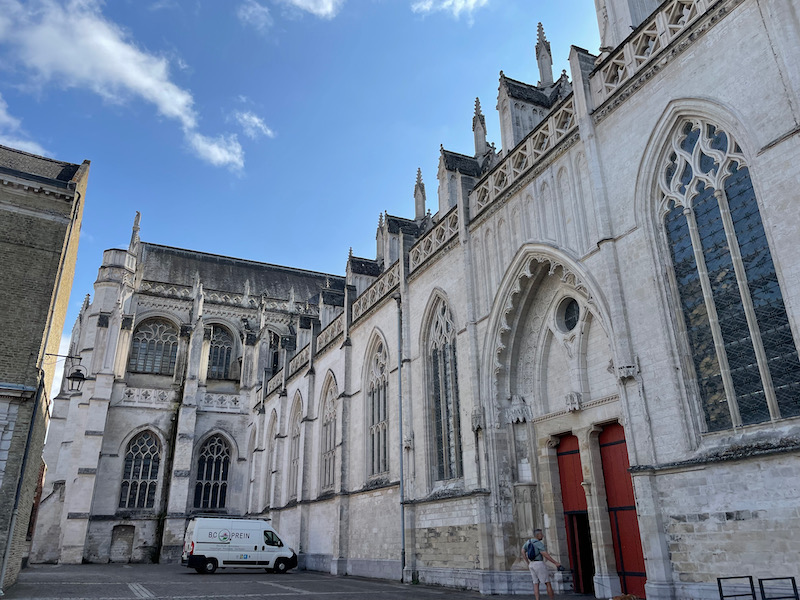
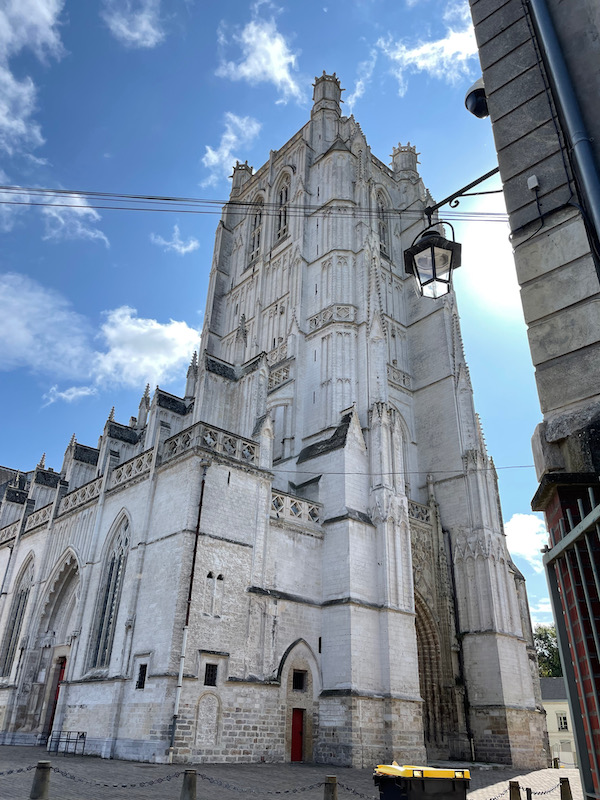
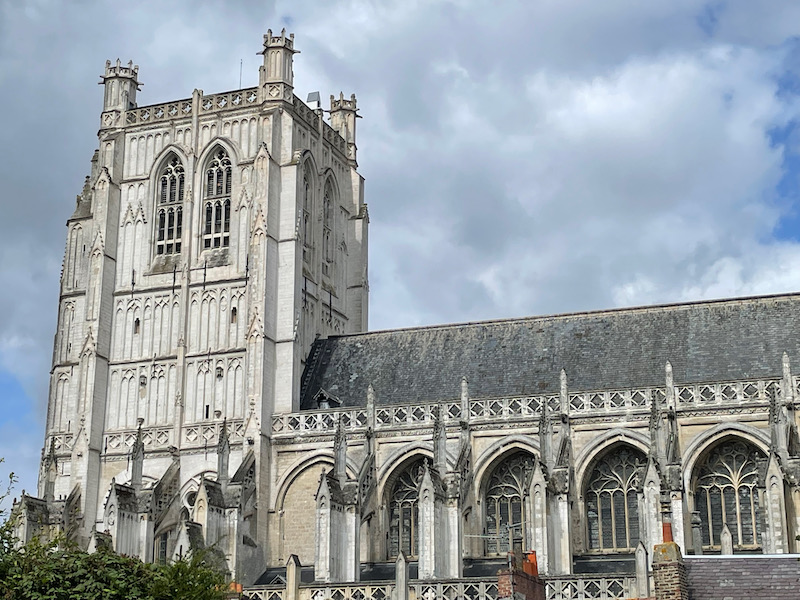
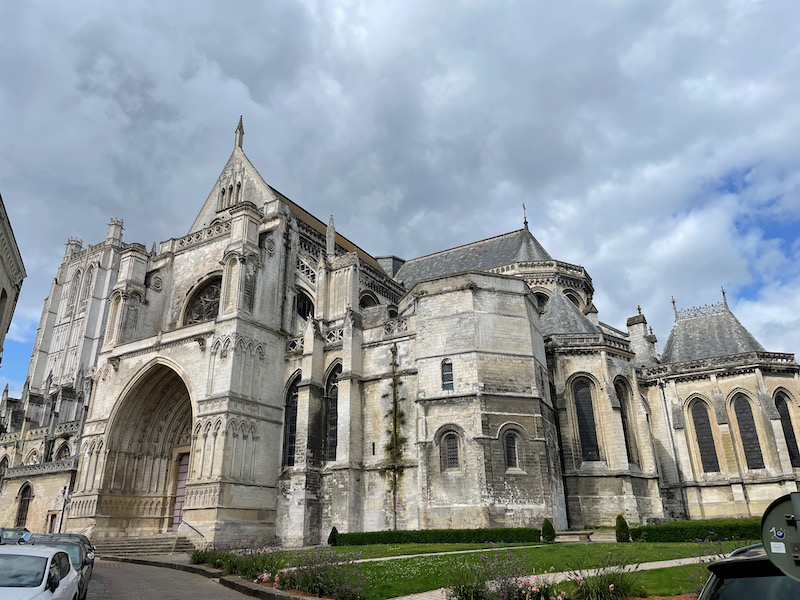
Here you can see down the nave, with the Gothic arches between the nave and side aisles, and the high vaulted ceiling. On a side wall near the back is this etching-on-slate that I think is of Audomar, (who died around 670). He was a bishop of Thérouanne and the town is named for him.
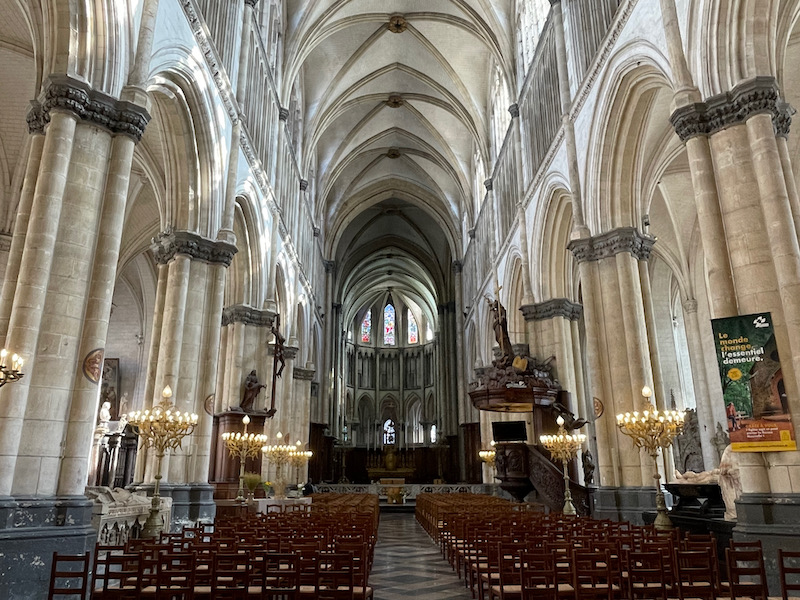
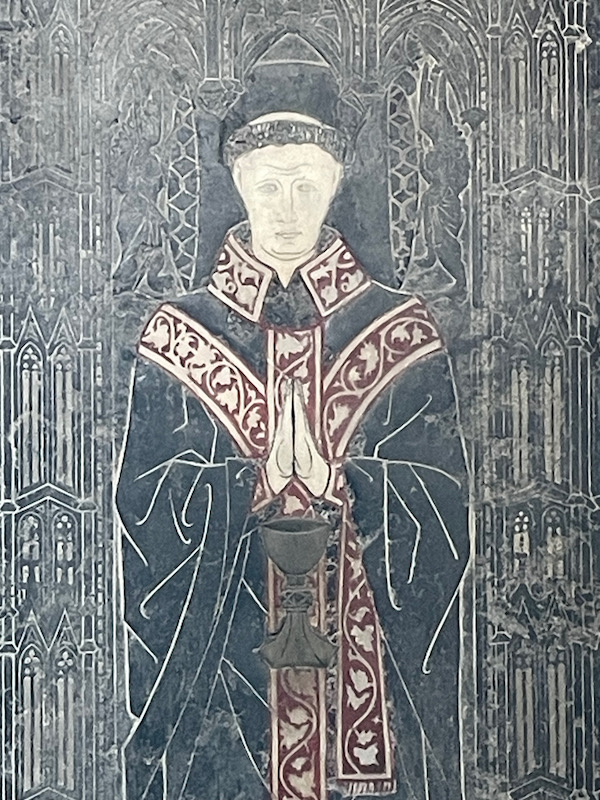
Most of the side chapels are enclosed with gates, like this one out of marble with statues along the top.
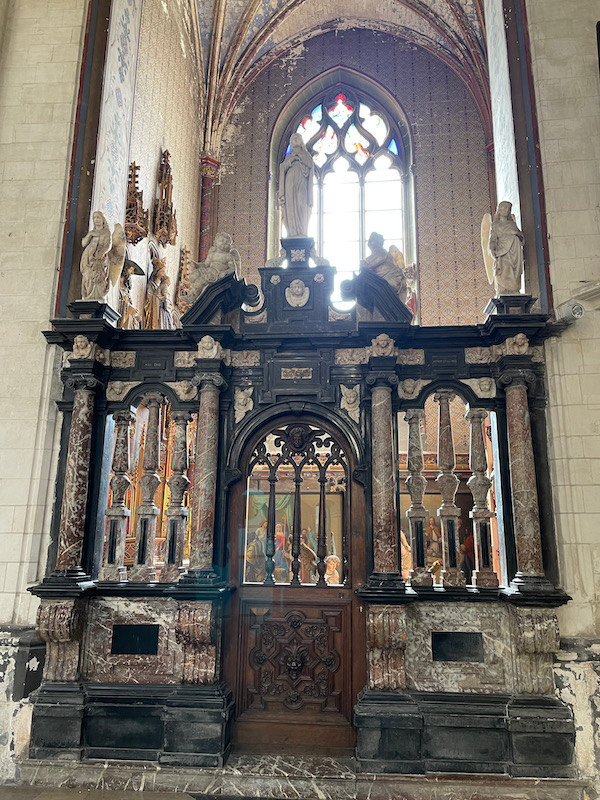
The first picture is an elaborate altarpiece in the Chapel of Our Lady of Miracles. The next 2 are one of the chapels that is highly decorated with a close-up of the paintings of the saints on one of the walls.
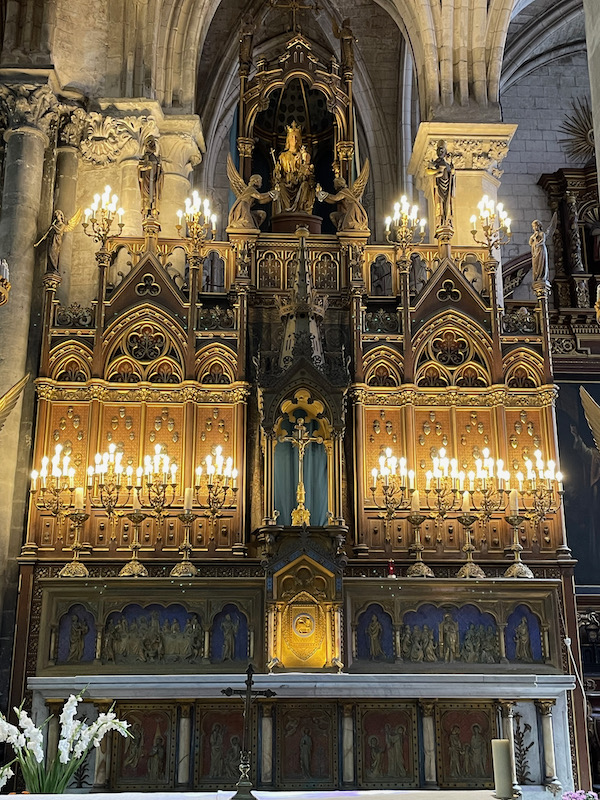
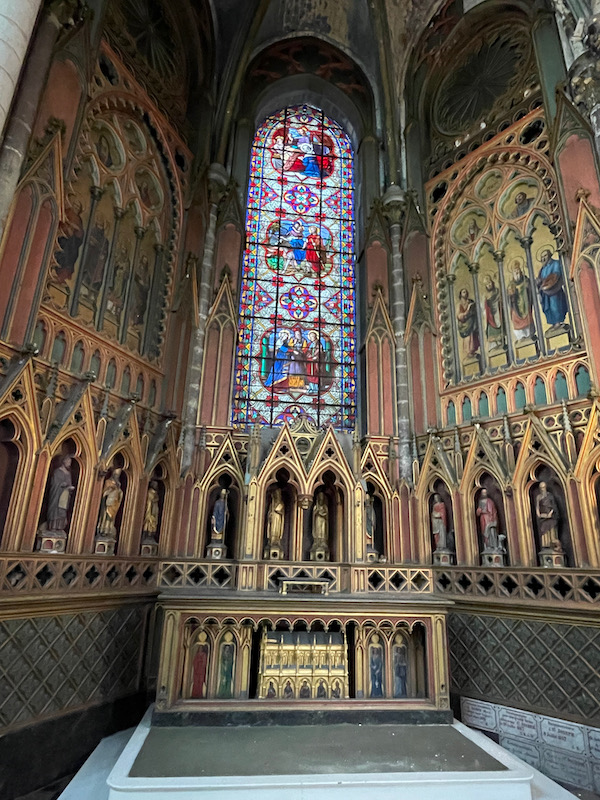
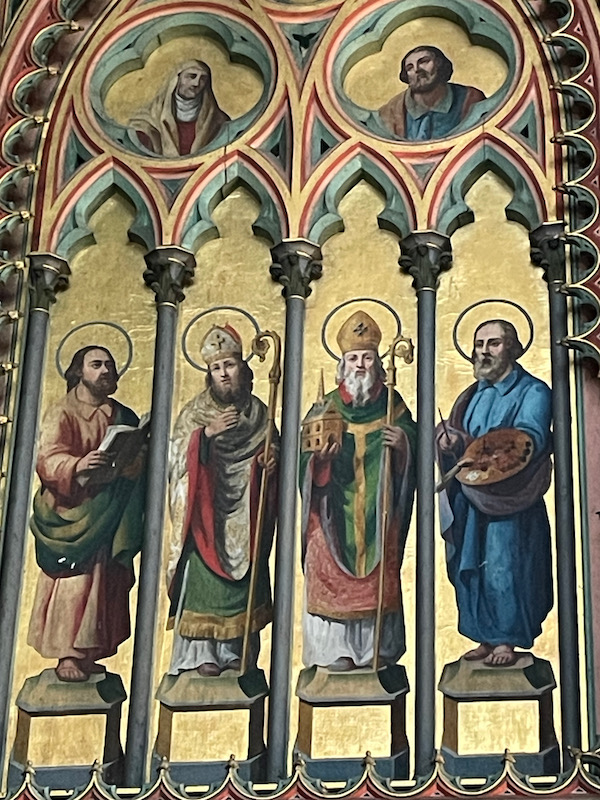
There is an astronomical clock from 1558 with the dial still in its original state. This clock is the 2nd clock in this cathedral with the first, an astronomical clock, dating from 1385. And then the carved pulpit.
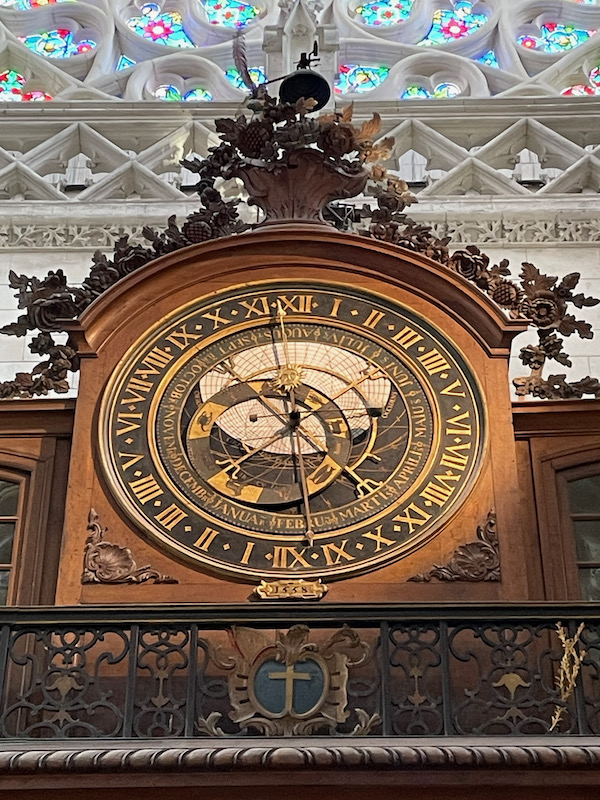
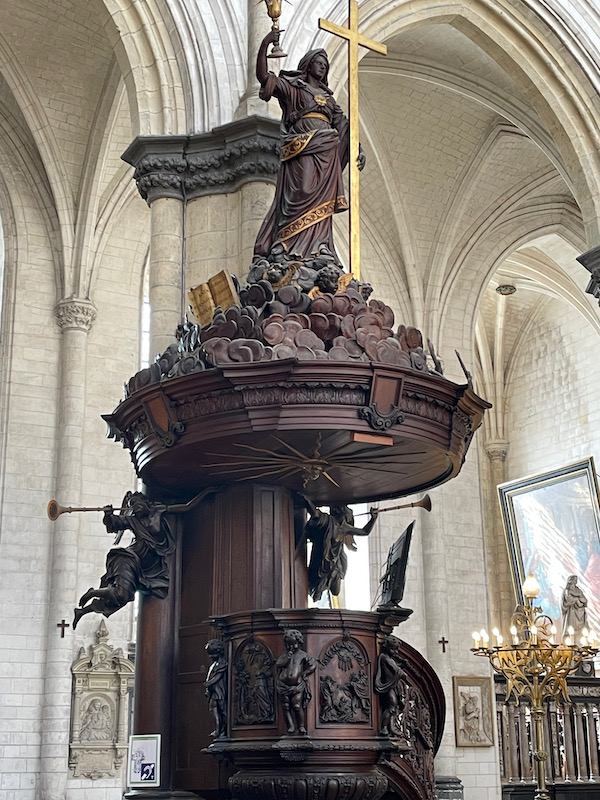
The organ case was pretty interesting. It is decorated with sculpted panels and large statues: Saint Peter and Saint Paul on either side of the main portal, framing the gallery: the allegorical statues of Faith and Hope; higher up, numerous statues of angels and musical cherubs, and above the large side turrets, King David playing the harp and Saint Cecilia at the keyboard of a portable organ.
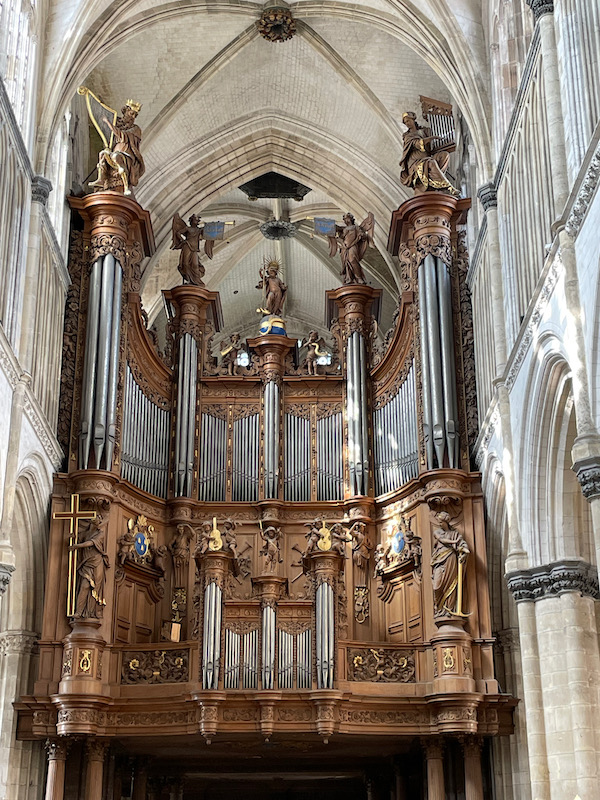
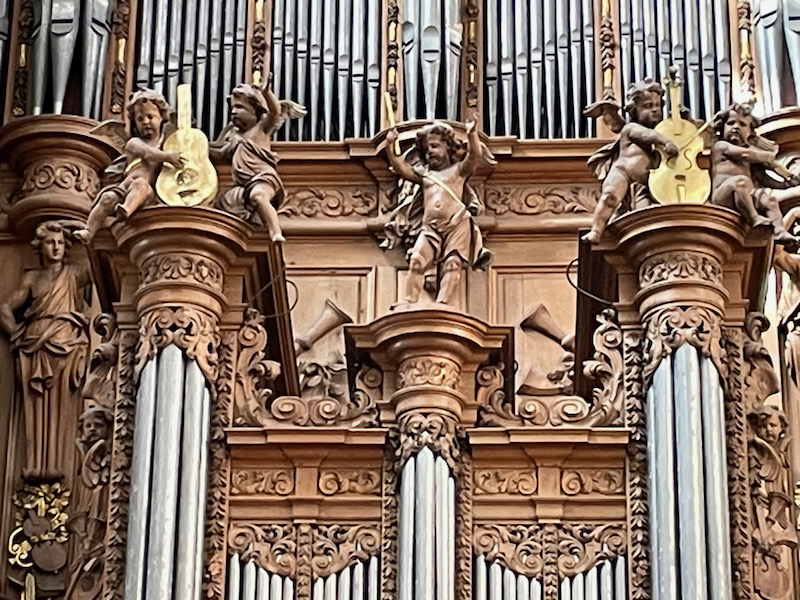
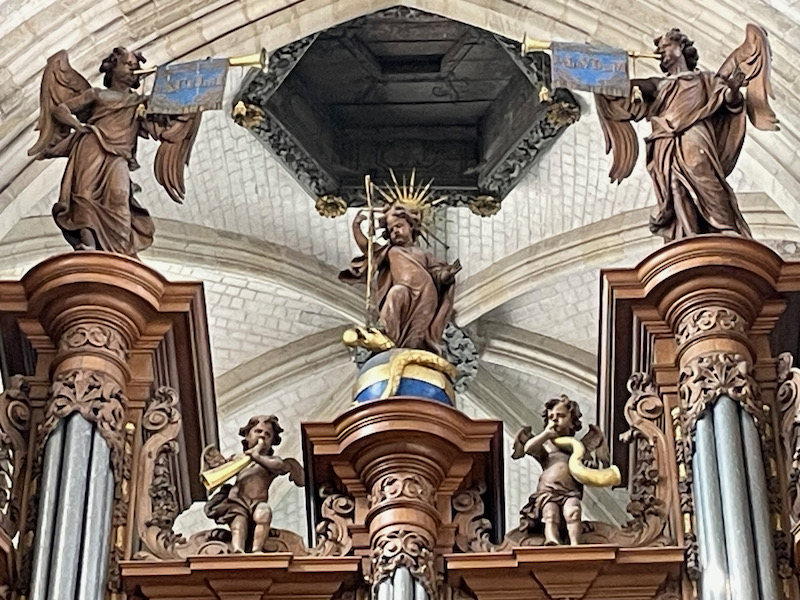
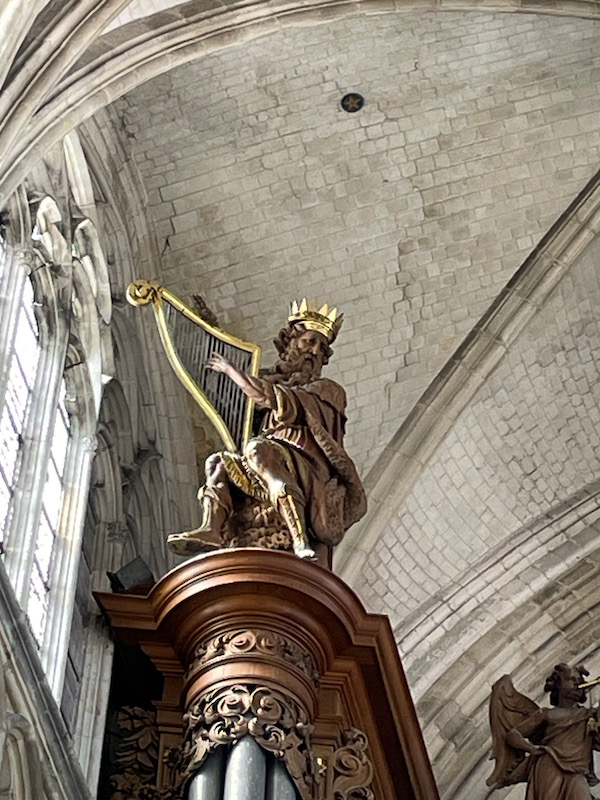
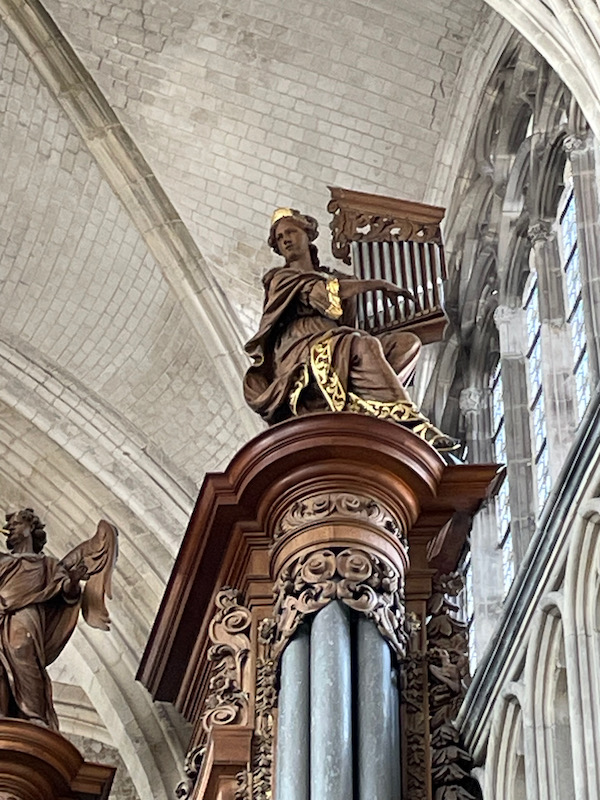
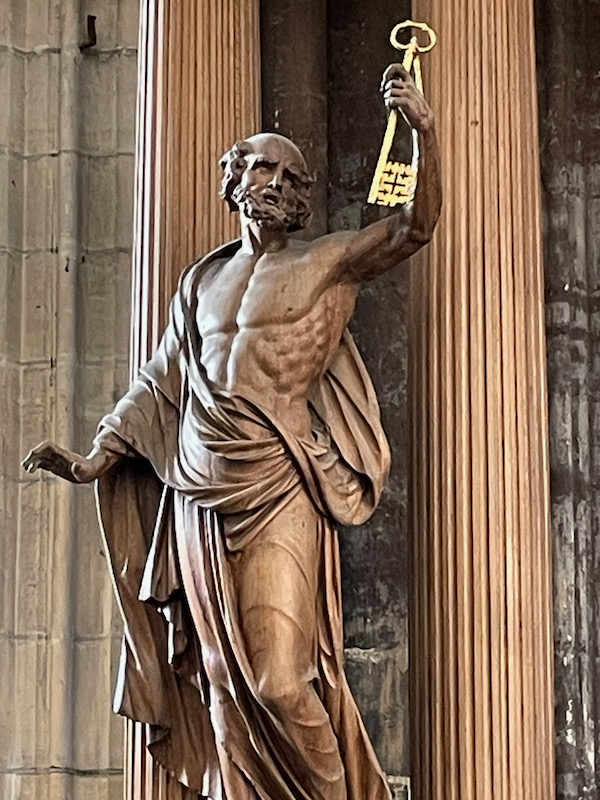
They have some really nice artwork, including this triptych (I show first the main picture and then each of the panels).
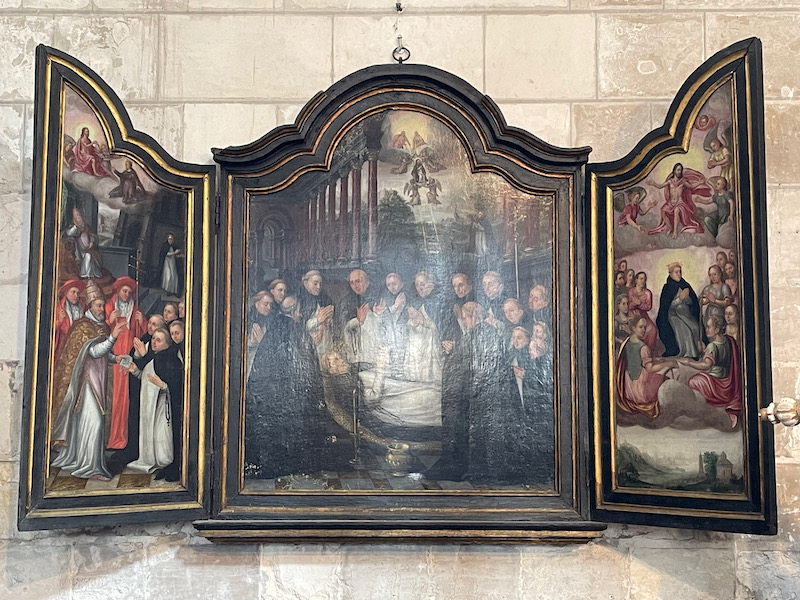
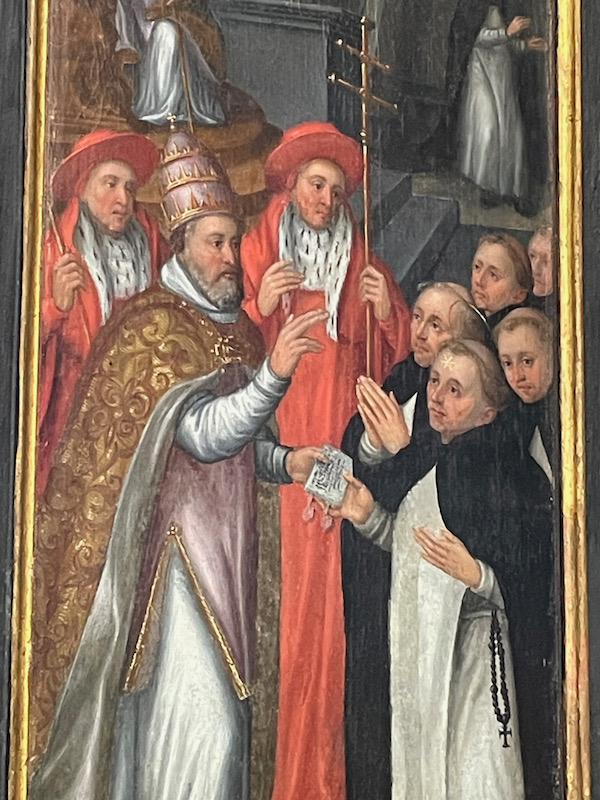
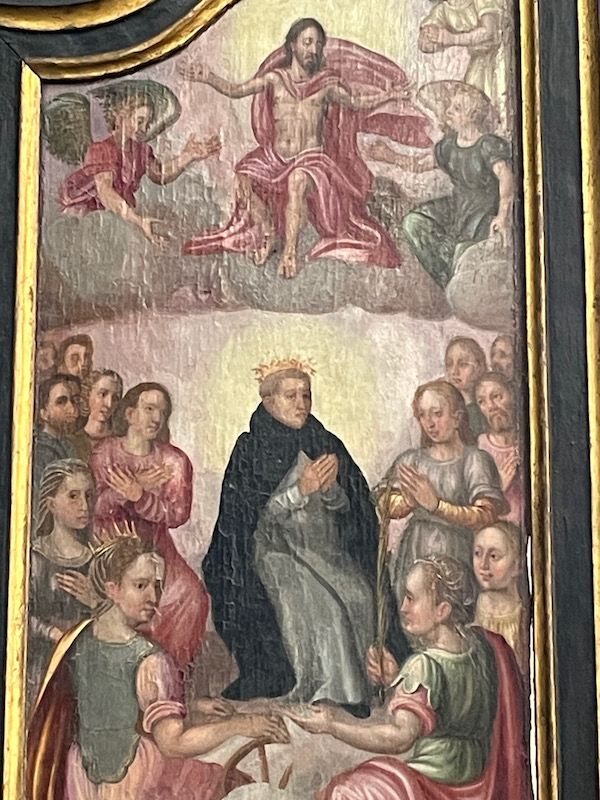

This very empty courtyard is that of the Musee de l'Hotel Sandelin. Installed in a private mansion from the 18th century, the museum presents a rich collection made up of several masterpieces. The house was was built between 1773 and 1777 by Pierre Sandelin, Count of Fruges. The townhouse is based on the Parisian mode i.e. "between courtyard and garden". The main building has two wings, home to stables and the kitchens, all of which is “U” shaped surrounding the main courtyard which gives onto the road. On the other side, the building gives onto a formal garden. So the building itself is "between" the courtyard and the garden. The façade is inspired by the Rococo style, the sculpted decor of floral or animal patterns featuring complex outlines. Interesting history here ... Pierre died before it was completed so his widow moved in alone. During the French Revolution, it was seized and the Sandelin family fled to Europe. In 1808, Marie-Josèphe Sandelin, who was born in Spain, lodged a claim to regain possession of the property. It was actually returned to her because only the property of French nobles should have been seized during the Revolution. She died soon after and it was then turned into a museum.
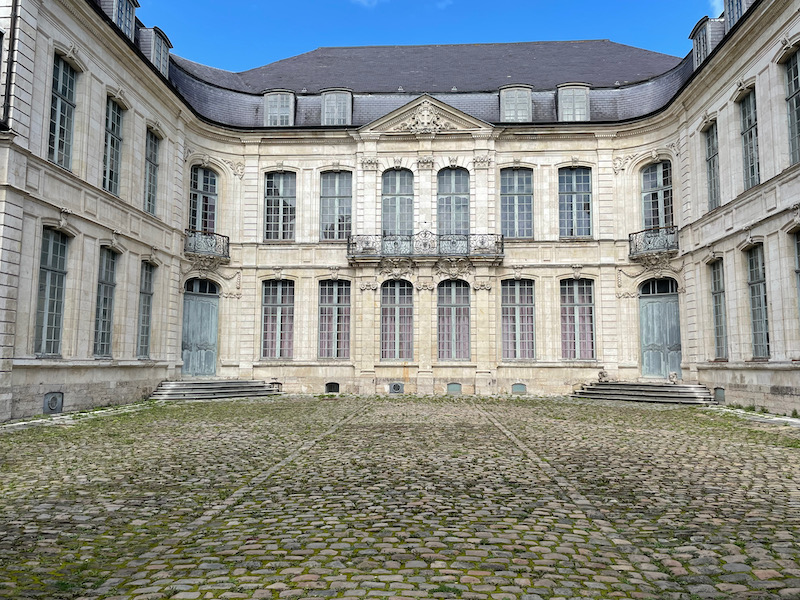
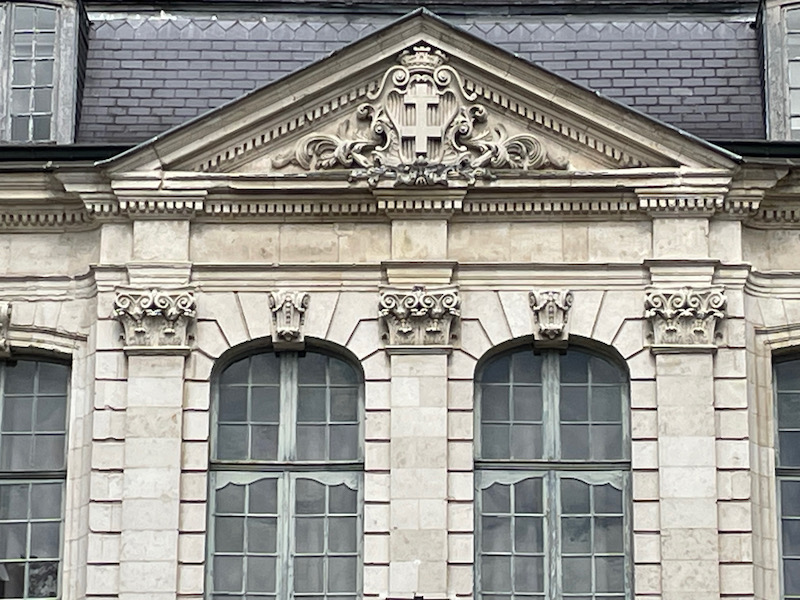
Undergoing some work, L'eglise Saint-Denis was closed and fenced off. It has the oldest Gothic tower in the region dating from the 13th century.
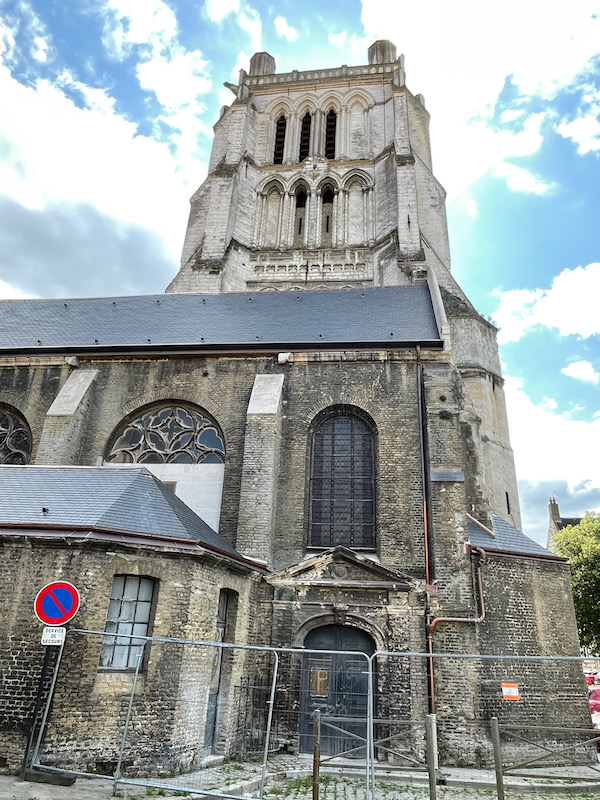
And the unplanned Corgi meet-up on the streets of Saint-Omer. This is a Cardigan Corgi, if I remember right, and a male, a bit larger than Lucy. They did the obligatory sniffs, and then a little playing around. He was VERY friendly!!


On the small square at the junction of the rue Saint-Bertin and the pedestrian street, La rue Piétonne des Épéers, stands a statue of the child with a swan, perched on a fountain. It was one of the few fountains that we saw that was actually working, with the water flowing out of the swans mouth.
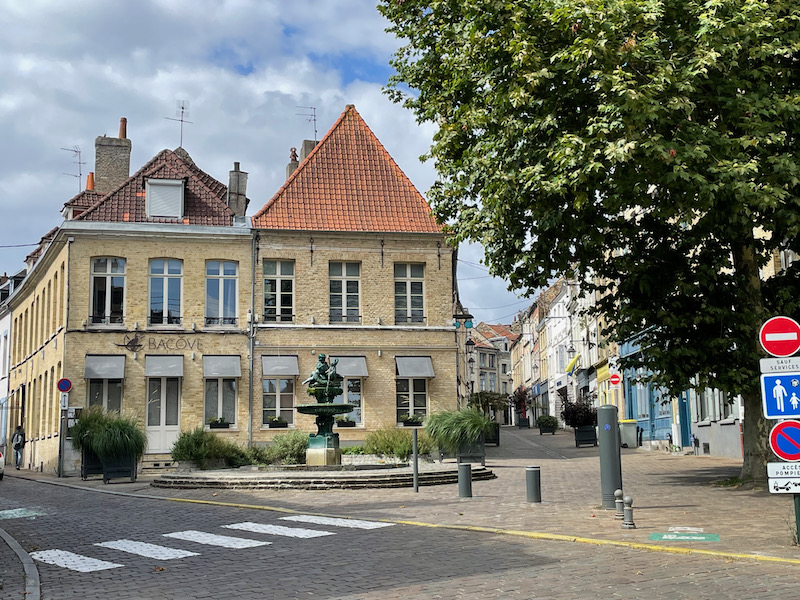
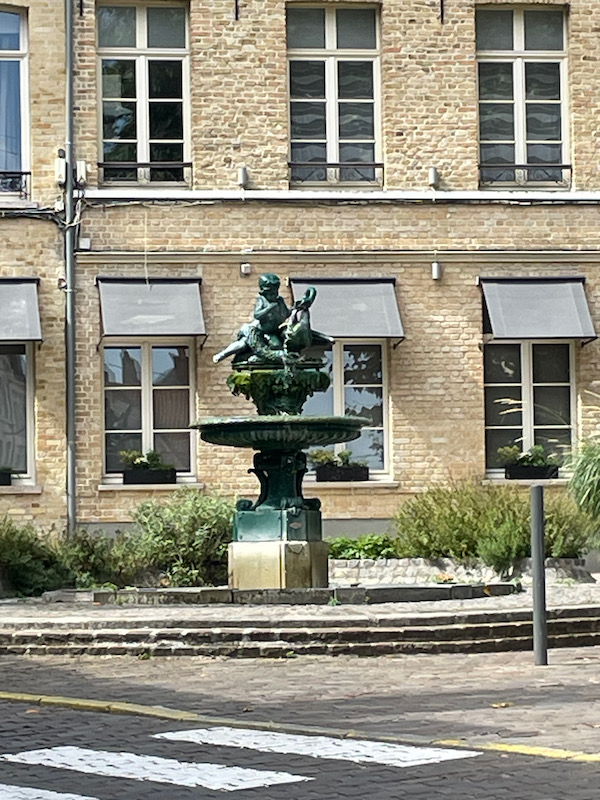
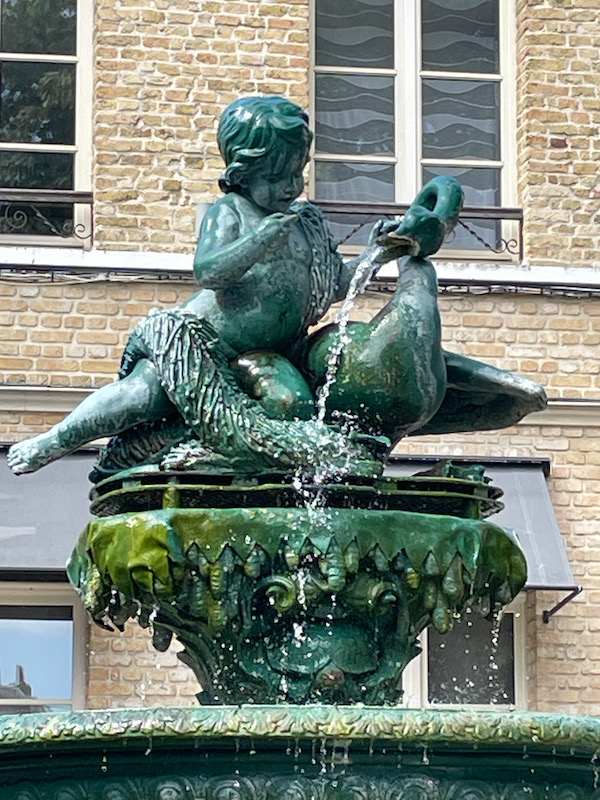
The Chapelle des Jesuites is a Baroque chapel built by the Jesuits between 1615 and 1640. When the Jesuits were expelled from France in 1763, the chapel continued to be used for services until the French Revolution. It now looks to be used for cultural activities and offices.
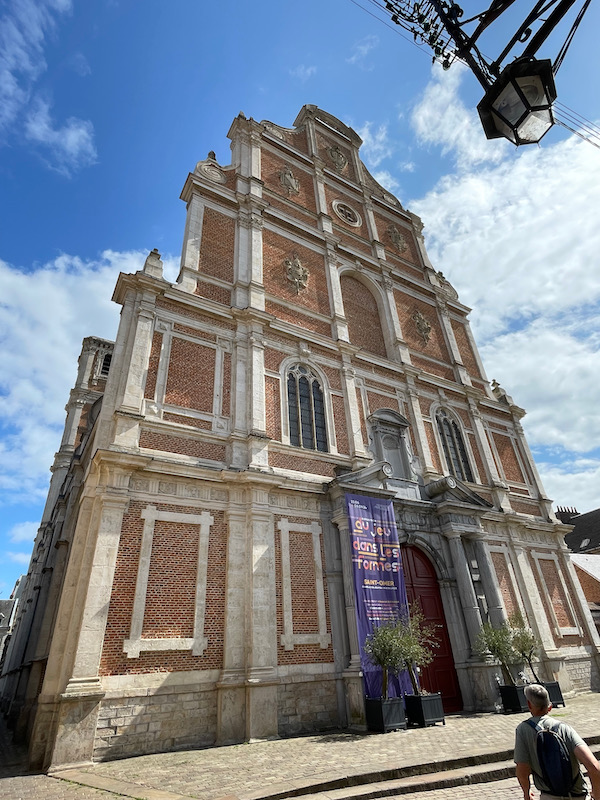
This crenellated brick porch indicates access to the castle mound (la Motte Castrale), which was the earliest castle here. The castle mound has helped protect the Cathedral of Notre-Dame from possible attackers since the 10th century. It was turned into a military prison in the 18th century and recently restored.
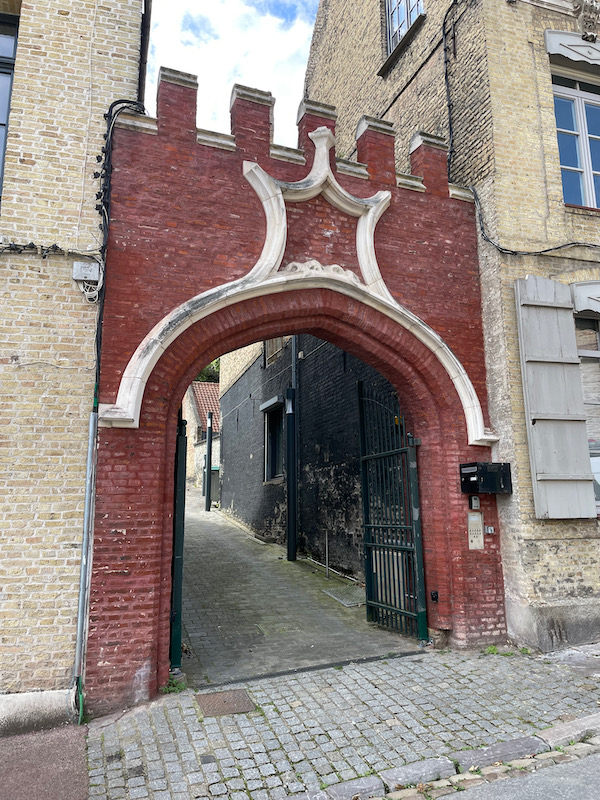
Our final stop was at Place Victor Hugo and the Saint Aldegonde fountain, the only remains of the old Sainte-Aldegonde church that was ruined by the fall of its bell tower in 1800. The fountain commemorates the opening of the Neufossé canal between the Aa and the Lys Rivers in 1756. The statues, above the central niche, represent these two rivers.

